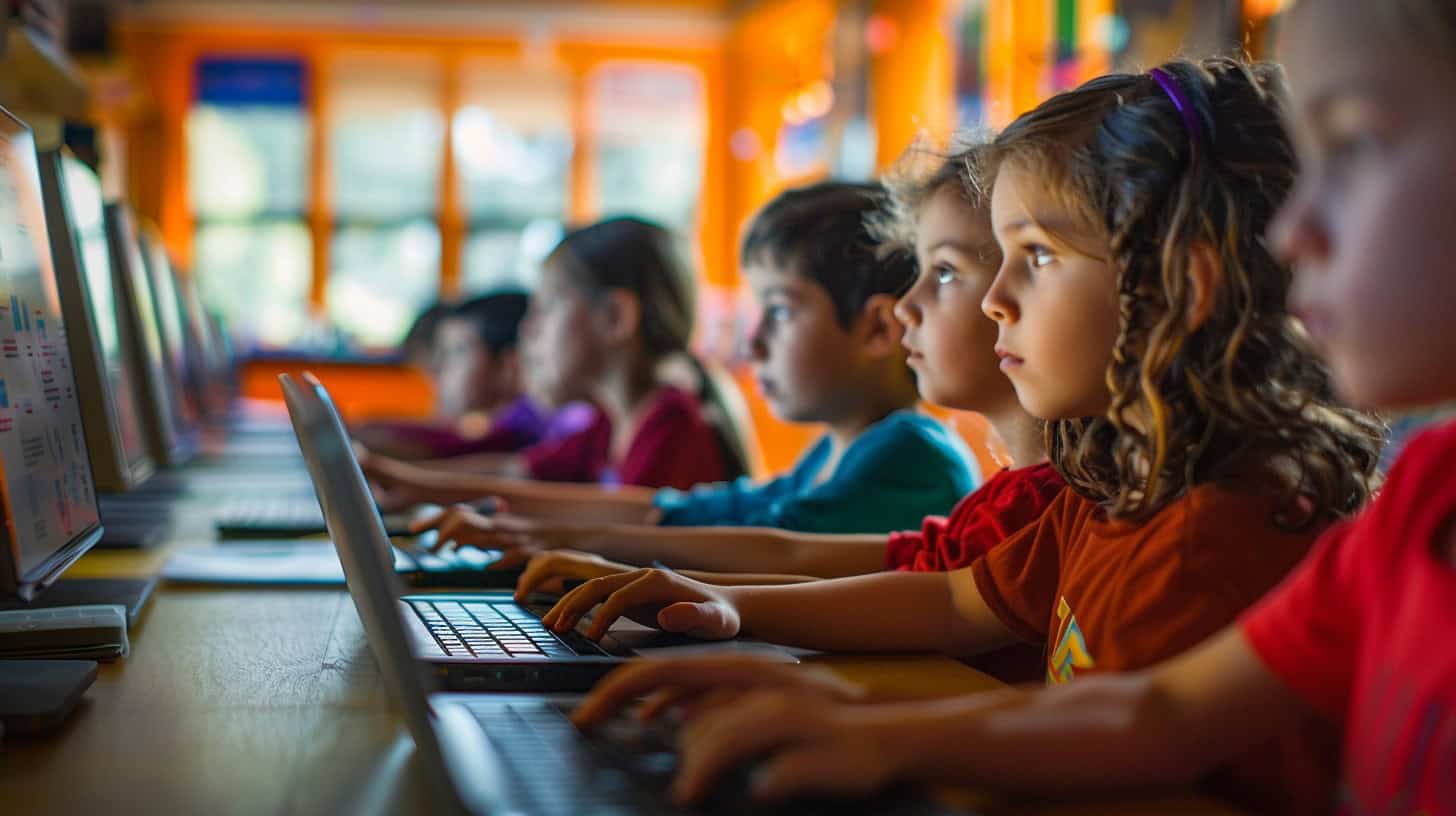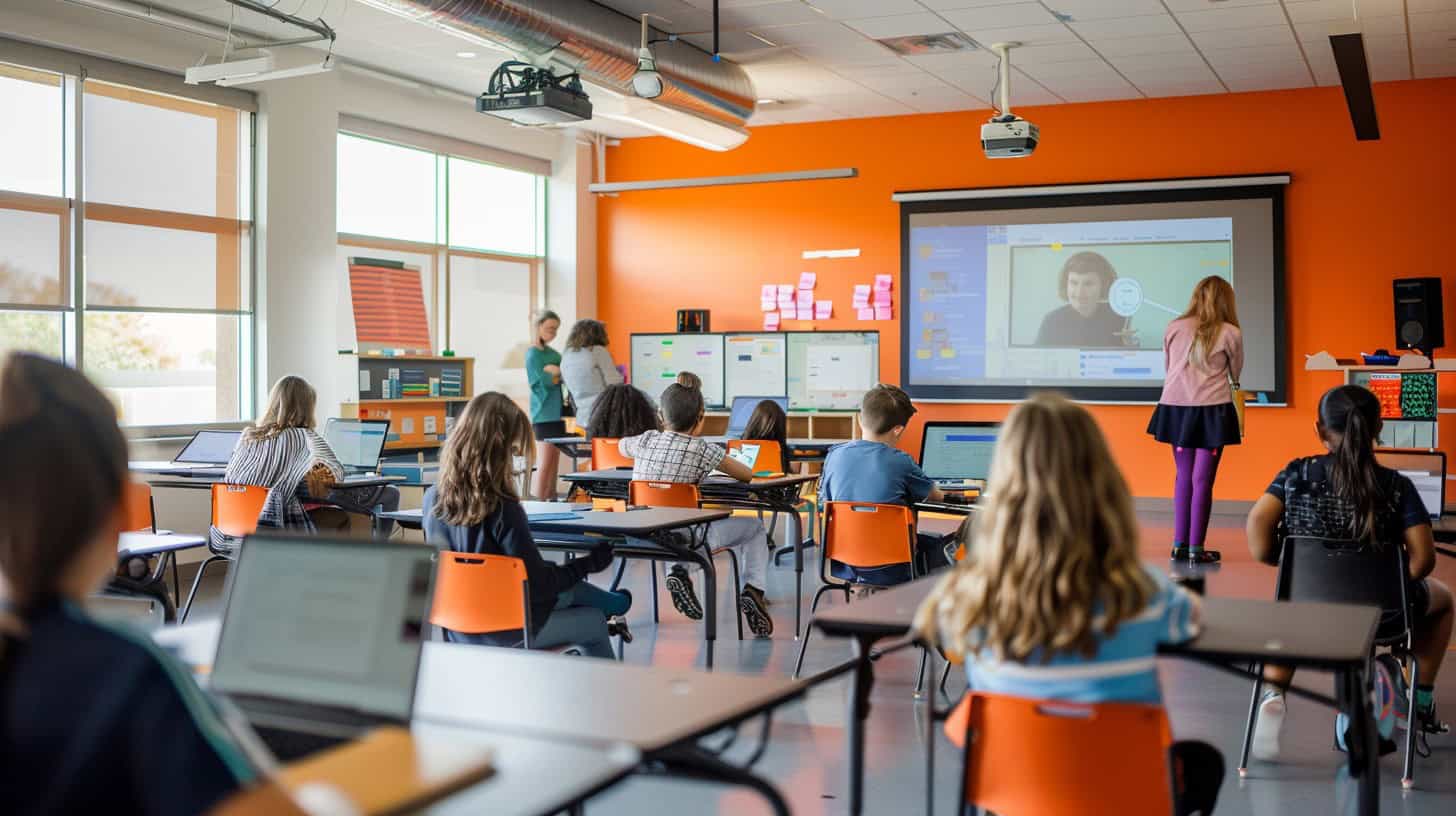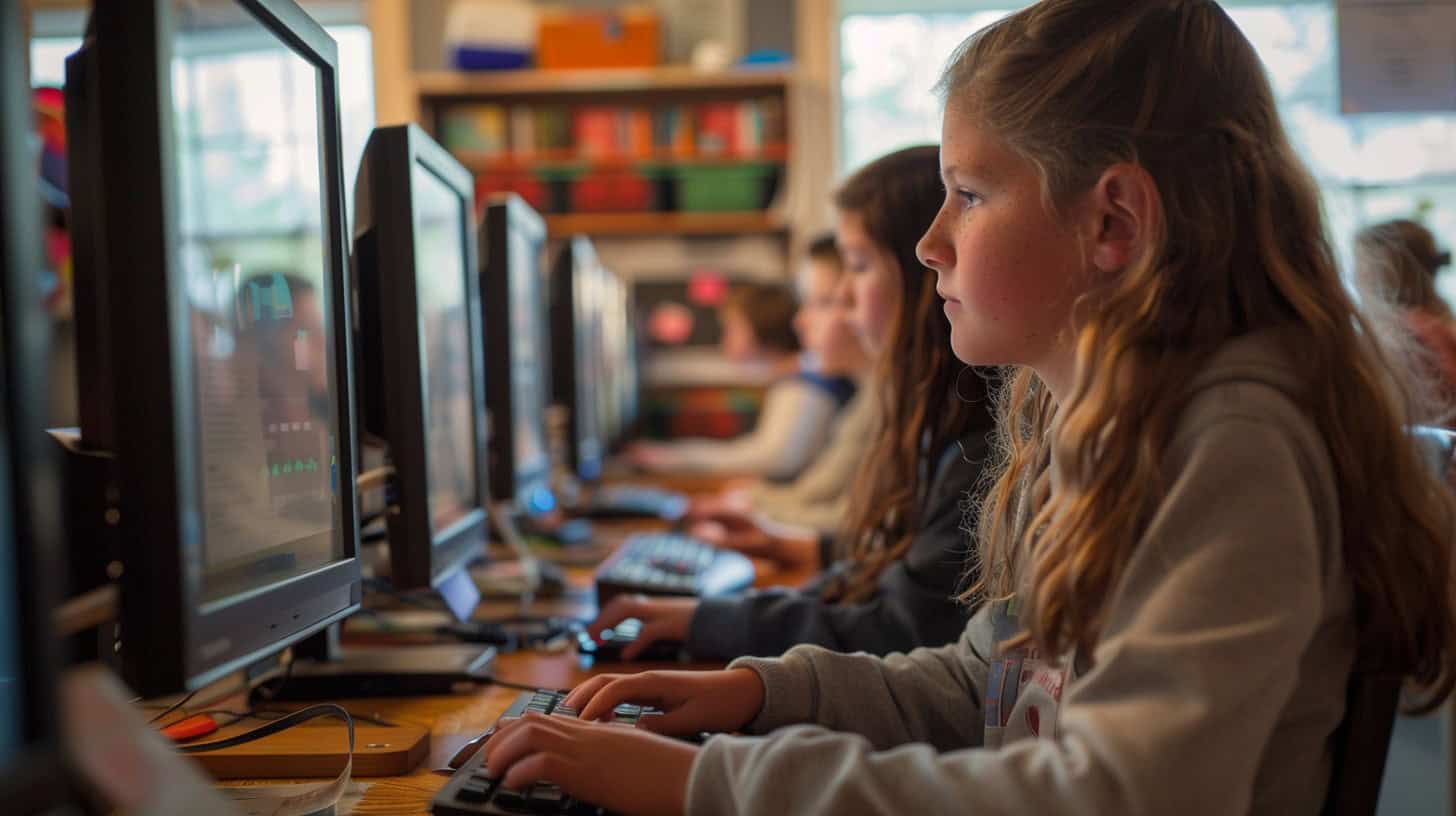Looking for when schools first welcomed computers? By 1983, a notable shift occurred, with one computer available for every 125 students. This article traces the remarkable journey of technology’s role in shaping education, from early machines to today’s interactive learning environments.
Stay tuned for an insightful exploration.
Key Takeaways
Schools began using computers in the 1960s, with a big change in 1983 when there was one computer for every 125 students.
Key milestones include the creation of COBOL in 1960, funding from the Vocational Education Act of 1963, and the introduction of PCs by IBM in 1981.
By the late ’80s and early ’90s, schools used Apple II units and multimedia PCs to make learning more interactive.
Nearly half of all schools reached a one-computer-per-student ratio between 2019 and 2020.
The COVID-19 pandemic accelerated online learning, showing both its potential and challenges, such as gaps in access to digital tools.
Table of Contents
The Early Years of Computers in Education

Schools first brought computers into classrooms in the 1960s. The Vocational Education Act of 1963 helped, making money available for schools to buy tech like IBM’s early machines and Apple II units.
Key Milestones in Educational Technology Adoption
Computers began changing schools in the early 1960s. Each milestone marked a new chapter in how teachers teach and students learn.
- The creation of COBOL in 1960 opened doors for programming education, showing students the language of computers.
- President Kennedy’s election that same year promised better funding for schools, setting the stage for technological upgrades.
- In 1963, the Vocational Education Act funded tech-based learning, bringing more computers into vocational classes.
- Mainframe and minicomputers started batch processing tasks in schools during this period, showing how computers can manage big jobs efficiently.
- The IBM PC’s debut in 1981 made personal computers part of educational drills and practice programs, offering interactive ways to learn basic skills.
- Following that, IBM PC clones filled classrooms by 1983 because they cost less and still did the job well.
- The Apple II became a staple in education around this time, too, praised for its user-friendliness and educational software options.
- By introducing simulation programs in 1983, teachers could create virtual environments for students to explore complex concepts safely.
- Multimedia PCs developed in 1990 added sound, images, and videos to lessons, making learning more engaging with CD-ROM technology.
These steps show how educators eagerly adopted technology over the years to improve teaching methods and student understanding.
Trailblazing Schools and Districts in Computer Integration
Moving from key milestones, many schools paved the way for technology in education. By 1983, a notable shift began, with one computer available for every 125 students in public schools.
Fast-forward to 1986, and we see a sharp increase in computer adoption. At this point, 25% of high schools utilized personal computers mainly for guidance purposes. It wasn’t just about having hardware; it was the start of integrating technology into learning experiences.
In 1983, Drexel University became the first campus to require every student to purchase a laptop. Computer-aided instruction gained widespread acceptance in schools by the early 1980s. It was during this period that drilling and practice programs were first developed for exclusive classroom use.
https://en.wikipedia.org/wiki/Computers_in_the_classroom
Elementary and middle schools leaned towards Apple II and Macintosh thanks to their user-friendly interfaces, while high schools preferred DOS-based clones for their robustness. This era set the foundation for technology-driven classrooms.
By 1994, advances such as digital video and virtual reality became popular tools among educators aiming to provide immersive learning experiences. The presence of at least one PC in most US classrooms underscored how integral computers had become in teaching methods.
Fast tracking to recent times—between 2019 and 2020—the landscape transformed dramatically with nearly half (45%) of all schools achieving a one-computer-per-student ratio; some achieved this milestone only across specific grades or classrooms but still represented significant progress towards technology integration in formal education settings.
Computers don’t just belong in offices anymore—they’re an essential tool on every student’s desk.
This evolution reveals not just an increase in quantity but also quality, with edtech transforming how subjects are taught and understood through interactive software like Oregon Trail or programming languages designed to sharpen logic skills such as BASIC programming language.
Advancements in Educational Computing

Educational computing grew rapidly, expanding from basic tasks to engaging, interactive lessons. An education software development company played a significant role in this leap, creating tools that enabled children and teachers to collaborate more effectively online.
Evolution from Simple Tasks to Interactive Learning
Computers began with simple tasks like drills and practice programs in 1981. By 1990, classrooms saw multimedia PCs that ran simulations and housed educational databases on CD-ROMs.
This shift from basic exercises to complex interactive learning changed education forever. Tools such as HyperCard helped students explore subjects in ways books couldn’t offer, making lessons vivid and engaging.
With the internet’s rise in 1996, learning transformed again. Students started using search engines to gather information quickly. They accessed websites for research, turning every computer into a window to the World Wide Web of knowledge.
Educational software became more captivating by including multimedia tools, marking a new era where students didn’t just learn; they interacted and discovered through technology.
The leap from text-based instructions to interactive simulations made classrooms places of active exploration rather than passive listening—a vital step toward fostering creativity and critical thinking among learners.
The Impact of Internet Connectivity on Educational Methods
Internet connectivity has transformed how we learn in schools. By 2009, almost all classrooms had computers and internet. This jump-started a new era of educational methods. With the web, students and teachers got access to unlimited resources.
They could now use social media, YouTube channels, and interactive whiteboards for learning. High-speed internet made streaming video possible in class.
Students started working together online too. Apps on tablets let them share files easily. Augmented reality (AR) apps brought lessons to life in ways books couldn’t match. The COVID-19 pandemic pushed this further when schools closed.
Online platforms became the main way for classwork and collaboration.
High-speed internet turned classrooms into gateways to the world.
This tech also lets teachers track progress better with digital tools that spot where kids might need extra help fast—a big change from marking papers by hand.
The shift was huge—classrooms went from chalkboards to being online hubs for solving problems and collaborative learning across the globe.
Digital Learning Surge During the COVID-19 Pandemic

The COVID-19 pandemic closed schools, pushing classes to the internet. Students and teachers met on web platforms, facing new challenges but also finding fresh ways to learn together.
Shift to Online Education Platforms
Schools closed during the COVID-19 pandemic. Teachers and students had to move fast to online platforms for learning. Web pages, digital media, and applications became classrooms.
By 2019, almost all kids from 3 to 18 years old could get on the internet. This made it easier to switch to digital schooling. Tools like Chromebooks helped a lot. They were easy to carry and perfect for both teachers and students working from home or anywhere else.
Online education brought STEM topics right into homes through screens. Kids learned about science, technology, engineering, and mathematics in new ways. Interactive web pages turned lessons into adventures.
Yet, this big change was tough, too. Not everyone knew how to use these tools at first. And sometimes the internet was slow or didn’t work right. But over time, schools got better at using online platforms.
This shift showed us that with the right tools – like laptops and good internet – learning can happen anywhere.
Challenges Faced and Insights Gained
The COVID-19 pandemic forced schools to quickly adopt online education platforms. This shift revealed big gaps in computer and internet access. Data shows students of color were hit hardest, falling months behind in math skills.
In 2019, only a small number of public schools let all students’ take computers home.
By the 2020 school year, nearly half the schools managed to provide a computer for each student, at least in some grades. This effort highlighted the vital role of digital citizenship and student-centered learning in today’s world.
It also stressed how important it is for students to have good communication skills and know-how with technology—like knowing how to use various software or understanding basic online safety rules—to keep up with their studies from home.
Teachers learned to adapt lessons for online formats, using tools like video calls and educational apps more effectively than before. The experience pushed forward innovations like bring-your-own-device (BYOD) policies and made clear that teaching methods need constant updating to include new technologies.
This period showed that overcoming digital divides is crucial for fair education everywhere.
FAQs About How Long Ago Schools Started Using Computers
When did schools first introduce computers?
Schools started using computers in the early 1980s, with the Apple II computer becoming a common tool in education by 1983.
How have computers changed learning in schools?
Computers transformed education from traditional methods to interactive and engaging learning designs, incorporating multimedia resources like DVD drives and online platforms for more effective teaching.
What role did early technologies play before computers in education?
Before PCs, educational tools included the magic lantern for projecting images, overhead projectors for sharing notes, and calculators introduced by Texas Instruments for math lessons.
Can you name some challenges faced when introducing computers into classrooms?
Challenges included high costs of equipment like portable or “luggable” PCs, limited access to one-to-one devices for every student, and ensuring teachers had the know-how to integrate technology effectively into curriculums.
How did advancements in technology influence classroom technology over time?
Advancements led from basic microcomputers to interactive whiteboards and voice assistants, enhancing student engagement through constructivism—a learning theory promoting hands-on experiences.
What impact has computer technology had on students’ skills outside traditional literacy?
Computer technology broadened literacy to include digital literacy—understanding how to use digital tools effectively—preparing students better for real-world scenarios with skills like coding (markup language) and online research.



